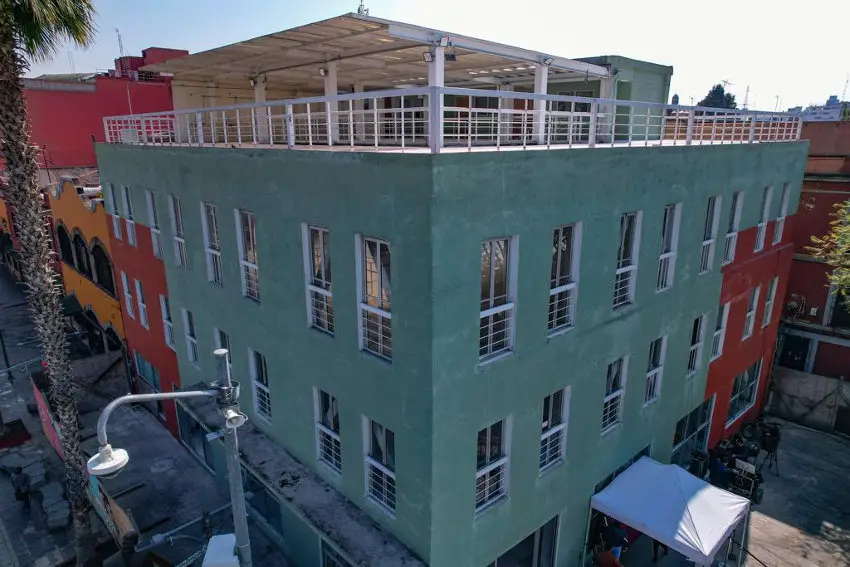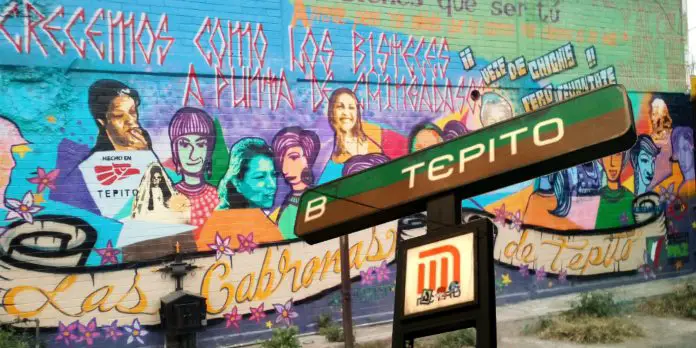What’s it like to film an epic scene in Chapultepec Castle?
The battle of 1847 between Mexico and the United States at Chapultepec Castle (which killed six Mexican military cadets who became known in Mexico as Los Niños Héroes) comes to life in Alejandro González Iñárritu’s latest film “Bardo, False Chronicle of a Handful of Truths.”
The film’s production designer Eugenio Caballero shared in an interview with Condé Nast how difficult it was to shoot a prolonged scene of the battle in a historical landmark.

“It’s a very complex location,” he said. “We covered a lot of things with lookalike materials that actually protected the existing carpets and pieces of furniture.”
In addition, the filmmakers were careful to choreograph the scenes so that they didn’t touch any wall or floor, and built a full-scale model of the castle’s tower to shoot at a parking lot near Mexico City’s airport.
Besides shooting in the capital, they also filmed in the desert of San Luis Potosí, on Playa Balandra in Baja California, in Baja’s desert and in the city of Los Angeles.
“Bardo” tells the story of a Mexican journalist who comes back to his home in Mexico City during a midlife crisis. It was released on Netflix on Dec. 16 and to selected theaters in the United States.
Get your own personalized passport to visit Mexico’s museums
In 2022, the Alliance of Mixed and Autonomous Museums (AMAM) launched the initiative Pasaporte de Museos 101 – AMAM (101 Museums’ Passport 101 – AMAM) to encourage people to visit museums after the setbacks brought by the pandemic. Returning for a second edition, the 2023 passport is ready for all cultural enthusiasts.
Holders of the passport get entry discounts to over 60 museums in cities including Mexico City, Guadalajara, Guanajuato, León, and Oaxaca city, as well as discounts at museum cafeterias and gift shops.
The passport also has a rewards program. After collecting eight stamps, the passport holder gets access to exclusive events, prices and special promotions.
It’s available to both foreigners and nationals at the Pasaporte 101 website. There’s also a special edition for kids ages six and over in partnership with Crayola called My First Passport 101, which gives access to exclusive workshops and events by sponsors like candymakers Dulces de la Rosa, shoe brand Vans and fashion accessories brand Kliping.
Culture’s temporary workers might get social security benefits in 2023
The federal Senate has approved a set of amendments to the General Law on Culture and Cultural Rights to guarantee independent artists and cultural workers access to social security benefits.
The bill proposes that the Ministry of Culture, jointly with the Mexican Social and Security Institute (IMSS), promote actions to ensure “that cultural service providers […] can opt for the simplified format for voluntary incorporation into the mandatory social security regime for self-employed people or family health insurance.”
The Chamber of Deputies’ Committee on Culture and Cinematography will now review the terms of the bill and submit amendments.
According to the organization México Creativo, 54.3% of people in the cultural and artistic industry (including writers, visual and performing artists, artisans and musicians) work independently while 21% are formally employed. The remaining 24% work in both sectors.
Tepito seeks to move from crime zone to art zone
Tepito has long earned a reputation as Mexico City’s most dangerous neighborhood. Now it seeks attention as a place of art through its urban murals.
The cultural collective Tepito El Barrio Se Expresa (The Tepito Neighborhood Expresses Itself) aims for the younger generation to move away from drug dealing, addiction and crime toward art.
“If they work for it, they will have a better future,” the collective’s director Ramón Ubaldo told newspaper La Jornada Maya.
He explained that they’ve managed to rescue areas that were used as garbage dumps to instead exhibit murals that attract visitors.
So far, they’ve accomplished two of 15 planned mural projects. One mural tells the story of Tepito and the other one is dedicated to Cronos (time).
However, their projects are threatened by vandalism, lack of government resources (which has made residents chip in with their own money to accomplish projects) and lack of support from some community members. Still, Ubaldo says they will not give up and will continue to work towards their 15-murals goal.
A new Indigenous retail center to open in Mexico City’s Garibaldi Plaza
With an investment of close to 17 million pesos (US $876,000), Mexico City’s government has built the Indigenous Cultural Center in the city’s Plaza Garibaldi.

The project is part of the cultural movement Original pushed by the Ministry of Culture to create awareness in the national and international fashion industry of the value of artisanal work and the collective copyrights of Indigenous communities
Mexico City’s mayor Claudia Sheinbaum said that members of different Indigenous communities residing in Mexico City will be able to sell their artisanal products in the center.
The center is set to open by mid-January and will have 110 retail outlets.
With reports from Condé Nast Traveler, MVS Noticias, El Economista, La Jornada Maya and Mxcity.
